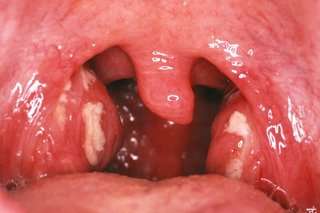Title: Tonsillitis: Symptoms, Causes, Risk Factors, Diagnosis, Prevention, Diet, Lifestyle, and Homoeopathic Treatment
Introduction:
Tonsillitis is a common condition characterized by the inflammation of the tonsils, which are two small glands located at the back of the throat. Understanding the signs, symptoms, causes, risk factors, diagnosis methods, prevention strategies, diet and lifestyle considerations, and the potential role of homoeopathic treatment is essential for effectively managing tonsillitis. In this blog post, we will explore the key aspects of tonsillitis and its holistic approach to treatment.
Signs and Symptoms of Tonsillitis:
1. Sore throat: Pain or discomfort in the throat, especially while swallowing.
2. Red and swollen tonsils: Inflammation and enlargement of the tonsils, sometimes with white or yellow patches.
3. Difficulty swallowing: Pain and discomfort can make it challenging to eat and drink.
4. Fever and chills: Elevated body temperature and shivering.
5. Tonsil stones: White or yellowish lumps on the tonsils, formed by debris and bacteria.
6. Bad breath: Foul-smelling breath due to bacterial buildup.
Common Causes of Tonsillitis:
1. Viral infections: Tonsillitis is often caused by viruses, such as the common cold or influenza.
2. Bacterial infections: Group A streptococcus bacteria (Streptococcus pyogenes) is a common bacterial cause of tonsillitis, known as strep throat.
3. Other infections: Fungal or parasitic infections can also lead to tonsillitis in rare cases.
Risk Factors for Tonsillitis:
1. Age: Tonsillitis is more common in children and teenagers.
2. Exposure to infections: Being in close contact with someone who has a viral or bacterial infection increases the risk.
3. Weakened immune system: Certain medical conditions or medications can weaken the immune system, making individuals more susceptible to tonsillitis.
4. Frequent exposure to allergens: Allergic reactions can trigger inflammation in the tonsils.
Diagnosis of Tonsillitis:
Tonsillitis can be diagnosed through various methods, including:
1. Physical examination: A healthcare professional will examine the throat and tonsils for signs of inflammation and infection.
2. Throat swab: A swab of the throat may be taken to test for bacterial or viral infections, particularly in cases of suspected strep throat.
Prevention Strategies for Tonsillitis:
1. Hand hygiene: Regularly wash hands to prevent the spread of viruses and bacteria.
2. Avoid close contact with sick individuals: Minimize contact with people who have viral or bacterial infections.
3. Cover mouth and nose: When coughing or sneezing, cover the mouth and nose with a tissue or the elbow to prevent the spread of germs.
Diet and Lifestyle Considerations:
1. Stay hydrated: Drink plenty of fluids, especially warm liquids like tea or broth, to soothe the throat.
2. Eat soft, soothing foods: Consuming soft and easy-to-swallow foods like yogurt, applesauce, and soups can alleviate discomfort.
3. Gargle with warm saltwater: This can help reduce inflammation and alleviate symptoms.
Homoeopathic Treatment for Tonsillitis:
Homoeopathic treatment for tonsillitis aims to reduce inflammation, alleviate symptoms, and prevent recurrent episodes. Some commonly used homoeopathic remedies for tonsillitis include:
1. Belladonna: Indicated for sudden onset of intense sore throat, red and swollen tonsils, and high fever.
2. Mercurius solubilis: Useful for tonsillitis with swollen and painful glands, excessive salivation, and badbreath.
3. Hepar sulphuris calcareum: Recommended for tonsillitis with painful and sensitive throat, especially when swallowing.
It is important to consult a qualified homoeopathic practitioner for an accurate diagnosis and individualized treatment plan based on your specific symptoms and overall health.
Conclusion:
Tonsillitis can be uncomfortable and disruptive, but with proper management, it can be effectively treated. By understanding the signs, symptoms, causes, risk factors, prevention strategies, diet and lifestyle considerations, and considering homoeopathic treatment as a complementary approach, individuals can effectively manage tonsillitis and promote healing. Remember to consult healthcare professionals for an accurate diagnosis and to create a comprehensive treatment plan tailored to your specific needs.

Leave a Message